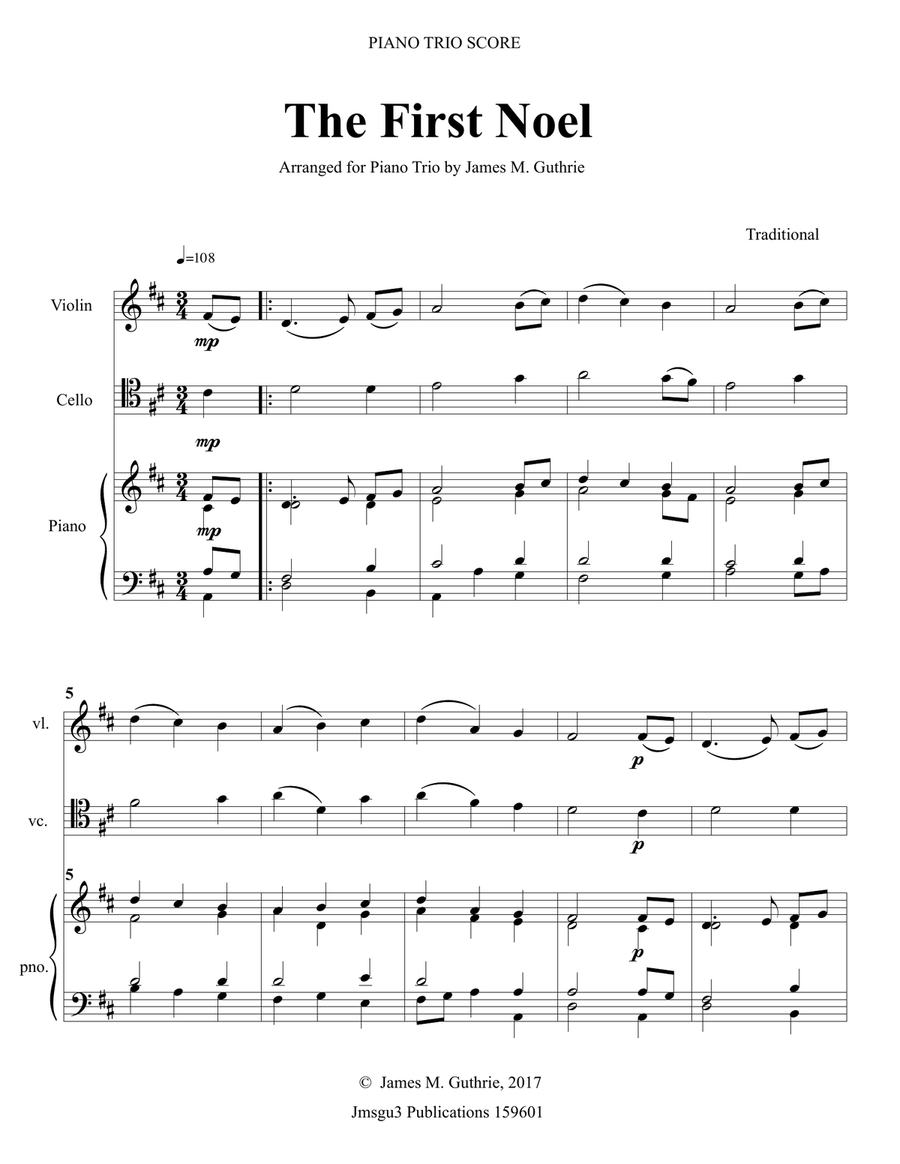Piano Trio - Level 2 - Digital Download SKU: A0.549903 Composed by Traditional. Arranged by James M. Guthrie, ASCAP. Christmas,Standards. 9 pages. Jmsgu3 #3685139. Published by jmsgu3 (A0.549903). Arranged with new harmony for the final verse. Origins The First Noel is an English Christmas carol. Even more, it was probably written in the late Cornish Renaissance period. While other versions spell the title as Nowell, this is a colloquial variation. Furthermore, Noel is an older word meaning Christmas. Therefore the First Noel translates as the First Christmas. First of all, Gilbert and Sandy published the earliest version. As a result, this version appears in the Carols Ancient and Modern songbook of 1823. William Sandy edited and arranged the book. Similarly, his partner Davies Gilbert edited and added the familiar extra verses. Stainer Organist and composer Sir John Stainer published the most noteworthy customary arrangement in the 1870s.  Stainer is, above all, famous for his songbook entitled: Christmas Carols New and Old (1871). This volume served as an essential catalyst for reviving the English Christmas carol.  Other famous Stainer arrangements from this book include What Child Is This, God Rest Ye Merry Gentlemen, Good King Wenceslas, and I Saw Three Ships. Diatonic Function The melodic structure in the First Noel is uncommon among English folk tunes. It simply repeats one phrase twice and then follows a variation refrain. All three phrases of the song end on the mediant scale degree. This is unusual because the diatonic function of the mediant is non-final compared to the more usual tonic or even dominant degrees. Consequently, this gives the song an open-ended feeling â like maybe it never ends. Political Context The Catholic clergy sang carols outside of the church in Latin. After the Protestant Reformation, the reformers thought it would be better for everyone to sing carols. They decided to bring music back to the common folk. So, they translated the lyrics from Latin into a common language. Moreover, the Protestants wanted more control over the music in the church than what the Vatican allowed. Protestant composers such as William Byrd composed complex polyphonic Christmas music that they called carols. Nonetheless, some famous folk carols were composed in this era. Eminent composers in the nineteenth century began to revise and adapt them. Consequently, they revived the English carol.
